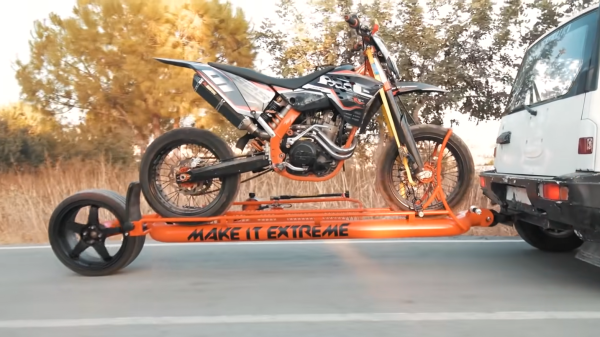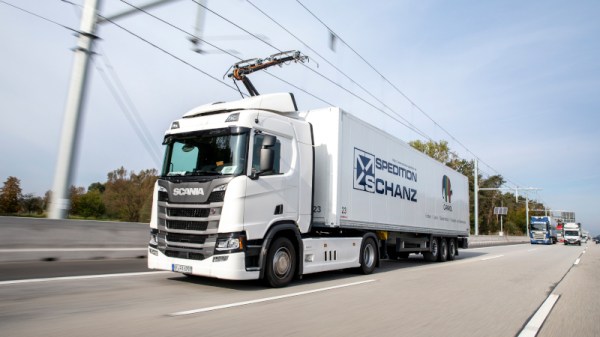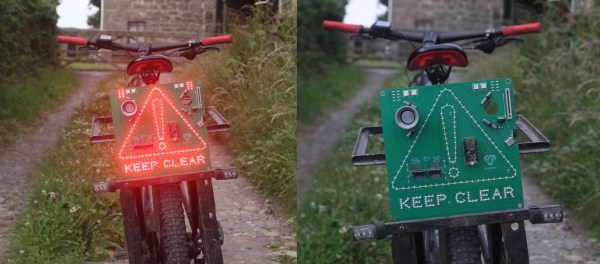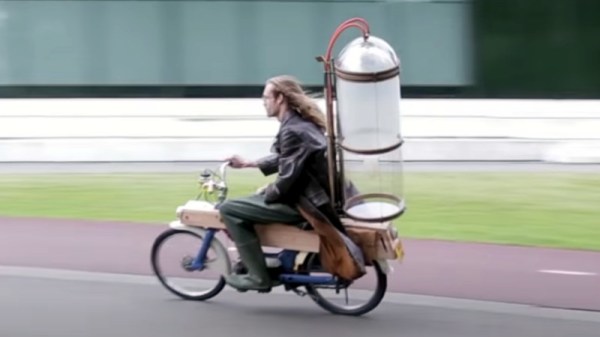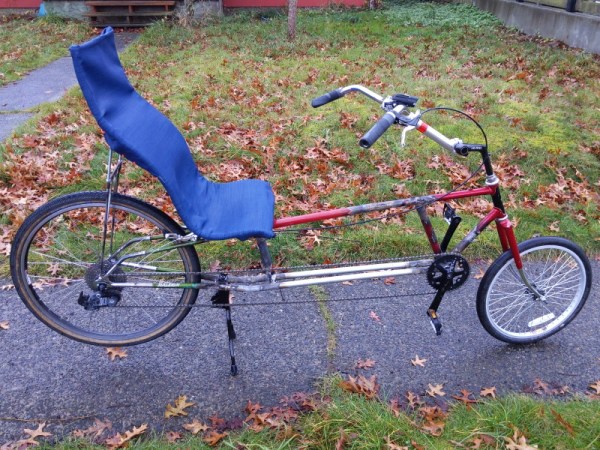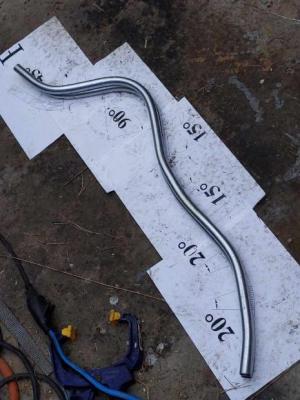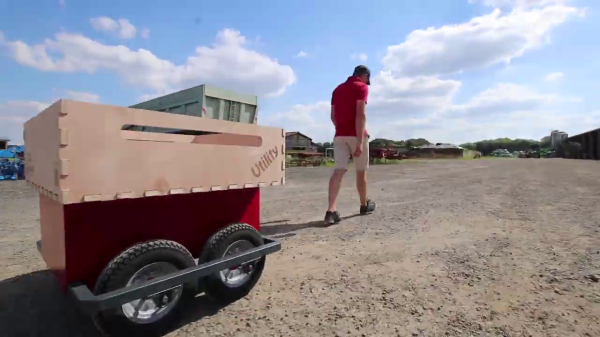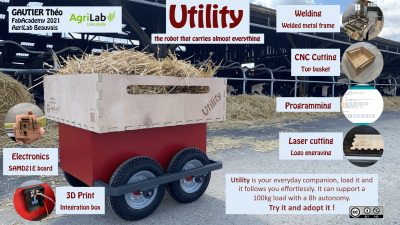A motorbike might not take up a lot of parking space, but this is not true for the trailer required to transport one. To solve this problem, [Make It Extreme] built a custom single-wheel motorbike trailer barely wider than the motorcycle itself.
The frame of the trailer is welded together from a couple of sections of large diameter steel tube, with a single car wheel mounted to a C-shaped portion on the rear end. A standard ball hitch would allow the entire trailer to tilt over to one side, so a pin hitch is used instead, with a pivot to allow up and down movement. Another pivot was added to the frame just ahead of the rear wheel to allow the trailer to lower to the ground for loading. It is raised and lowered with a manually pumped hydraulic cylinder, and a small pivoting ramp at the back also acts as a stop for the motorbike’s rear wheel. With the rigid frame and no suspension, we’re just wondering how well it will handle bumps at high speed.
[Make It Extreme] really likes his recreational vehicles, which include a monotrack motorbike, a monowheel, and an all-terrain hoverboard, among others. Continue reading “Single-Wheel Motorcycle Trailer”

